A Seasonal Running Update
How I recovered from my over-training injury and ran a marathon six months later.
I apologize in advanced for the long format post, especially for those of you who are here for the photography and “east van” content. This was my opportunity to reflect on my training and my first marathon experience and it ended up being a valuable exercise. Below you can find certain sections highlighted if you have some interest but aren’t interested in reading the entire thing.
Running Reset
Back in April I posted an article called My Big (running) Mistakes. In it, I outlined my previous year of training and how I was running on a more frequent basis, increasing kilometers steadily and doing some bigger long runs once or twice a month. Although I was feeling good, I ended up with an over-training injury (what I self diagnosed as a stress fracture in my shin).
At the time of writing that piece (late March 2024) I was just beginning to play with the idea of starting to run again. Motivated to learn from my previous mistakes, I did a lot of strengthening work and started to get my diet dialed in.
About a month later, and a few pain-free runs in, I signed up for the Royal Victoria Marathon which would happen in about 6 months time, giving me a nice window to recover some of my fitness and start to train for my first marathon.
This post will be a breakdown of training for my first marathon and outline some of the successes and lessons I garnered along the way.
This is the longest thing I’ve written on Substack, and most people don’t read all the way through my pieces (I see you, the data doesn’t lie). So if you’d like to skip around, here are the sections I’ve broken this up into:
Diet & Strength/Mobility
The Diet
I attributed my over training injury to a few key things, a) increasing load and volume too quickly, b) wrong shoes, and mostly c) poor diet. I was under nourished and maybe even slightly dehydrated during the last week before my injury, so I did not want to make that mistake again this time around.
I decided to track my eating for about a month while I was recovering to get a better understanding of my macronutrient intake.
I consider myself to have a pretty good diet, balanced, a lot of home cooked whole foods (for the most part), don’t drink much and rarely over ate, so I did not think I’d be too far off in any one nutrient, but there was obviously something missing considering my injury.
It turned out, I was about 50-75g of protein short every day given my mostly vegetarian lifestyle and without eating too many breakfasts (I had gotten used to intermittent fasting, likely a contributing factor as well).
Given that, the biggest change I made was consuming two 25g protein shakes with water or milk every day, and starting to eat more protein rich breakfasts like making protein pancakes, mixing cottage cheese with my eggs, or starting to integrate some more meat options in my lunches.
This enabled my body to have the nutrients needed to heal the constant damage I was doing to it, and by the end of the training I was continuing to feel stronger and less sore as the kilometers amped up. It was easy to consume more food while training since I felt an insatiable amount of hunger all the way up to week 16. I tried to keep my diet pretty clean, but when you constantly feel hungry and are burning 800 calories before breakfast some days, the croissants, cookies, and granola bars always seem to find a way home… I was mostly focused on just ensuring I was going to sleep every night with more calories than I was burning. Considering some days I was burning 900 calories even before breakfast, it was important for me to continue to give my body the tools it needs to repair itself after a day of training.
I also consumed daily electrolytes and took some vitamins such as C, D, and Magnesium. All which I think helped me stay healthy, energized during the day, and sleep well during training.
Funnily enough, being under-fueled ended up again being a detriment in my training the days leading up to the marathon, which I will cover a bit later.
Strength/Mobility
I have come to love strength training and mobility work. I have been doing strength training in some capacity since I was a teenager. Although I have to cut it out of my schedule every now and then because of a lack of time, I always try to find my way back into a routine every few months to maintain the strength I have built up.
Before this marathon training, because I was injured, I went through a “building” workout training block. I was lifting low reps but high intensity (weight), to hopefully strengthen my legs while my shinbone was healing.
During my marathon training, I had carved out Mondays and Thursdays as my strength training days. During the first 5-8 weeks, I was able to maintain that weekly, doing some sort of leg/core routine during those days of the week. However, once I started travelling a bit and the kilometers started to intensify through the plan, it was harder and harder to maintain my lifting schedule. When I finally did get a chance to get back in the gym, I was lifting a bit too heavy and then would end up sore for my runs. I decided to cut back on strength training for the last quarter of my training sessions.
For my next training cycle, I am planning to do a build phase leading up to it as I did last time and then maintain strength training better through the running. I believe I could have avoided some fatigue on race day and during the taper if I had been able to maintain the weight lifting throughout. Now that I have had one full training cycle, I think I will be able to prioritize doing a leg workout after the Thursday session, as well as on the Monday “rest day” as well.
As for mobility; I do a short Knees Over Toes guy mobility routine every night once I put my daughter to sleep. I have added a few other movements as well, but this is the basic routine I have done. This is one thing I will continue to do and adamantly encourage you do as well. I had two instances where I had rolled my ankle, quite dramatically, while running, and was able to continue to run, and run the next day and I 100% attribute it to my work using this mobility routine. Strengthening and lengthening the joints and tendons allows you to move naturally and bounce back through unexpected movements. The only other mobility work I did was a decent warm-up for every run, which you can find a plethora of on YouTube.
The Running Plan
One of the main reasons I picked the RVM was a) I heard the course is beautiful and b) the date aligned perfectly for me to do the bulk of my training during my summer break from school.
Although I have been training and coaching myself and other sports for over 10 years (even being NSCA CSCS qualified at one point…) , putting together a marathon training plan was a bit outside of my skillset, so I decided to look online to see what was out there.
I found a “novice” plan online by Hal Higdon which was in the range (in terms of training load per week) of a lot of different plans I had been researching, but this one read the nicest when printed out and made the most sense given the slow progression over 18 weeks.. The first few weeks already were already close to the training load (total kms per week) I was currently doing as I was starting to ramp back up to begin “real training”.
Printing the plan and setting up a space to see the progress on the plan was definitely a key part in staying consistent. The accountability of having the plan close to my running gear both at home and at work made it always front and center. Being a “checklist-guy” myself, crossing the training blocks off was definitely a key part of keeping me motivated over the 18 week plan (I will touch back on the plan a little bit later).
This plan had four run days a week, Tuesday and Thursday were shorter, Wednesday a bit longer, and Saturday the “long run” of the week. The way I set out those runs were usually
Tuesday - Some sort of speed or tempo run
Wednesday - Low HR long run
Thursday - Comfortable short run
Saturday - Slow or comfortable pace long run with some hills.
Sunday was saved for a “cross training day” in which I usually biked or walked.
Monday and Friday were rest days.
I really enjoyed this plan, I thought it built up responsibly and by the time I got to the “heavier weeks” my body felt ready to handle the increase in kilometers.
During the 35 km run (the last long run of the training), I felt very strong and was barely sore the day after. It left me feeling confident that I could do the full no problem.
It turns out, I likely should have done a program one or two steps ahead for what I ended up racing at, but again, I will cover that later…
Balancing the Schedule
Being a husband, father, friend, and a person who really enjoys lots of creative endeavors, running consistently 5x a week definitely required some schedule management.
At times it got a bit heavy, trying to sneak away for a run here and there, but by the end of the schedule, I was getting up at 5:00am and getting the kilometers in. There is lots of research out there that people who train in the morning are more likely to keep their routine, and I can definitely see why (if you can maintain a healthy sleep schedule as well).
Training with Friends & Variety
One of the best things I did towards the middle of the training block was start a small group chat with my brother and friend who were also training for marathons.
It was nice to get advice, encourage one another on our Strava runs, and “cope” with some of the ups and downs of training. This amount of training is unlike anything I had done before, so to have a safe space to be concerned and have people say they are going through the same thing was very nice.
I am sure joining a run club or program with people on a weekly basis would be awesome as well, but at the time of this training, I was doing the actual running independently for multiple reasons (where I live, the times I was able to run, etc).
The days I was able to run with a group was always more enjoyable, having a conversational run forces you to run at a slower pace and lower heart rate which is great, and also adds the mental distraction needed to get through longer runs.
I also tried to get a good variety of runs in during the weeks. Although I had my two go to routes around my neighborhood & White Rock, I was always open to throwing in a trail run or a trip to Vancouver from the suburbs to change it up. Those variety runs often were encouraged by people also training for longer distances and their company was always appreciated.
Shoes, Shoes, Shoes
Through the 18 weeks of training, I was fortunate enough to test out a few pairs of shoes and I will write a quick review for each pair, and explain why I decided on the pair I raced in.
No Shoes
I ran a few times in the summer with no shoes and I would definitely recommend trying it if you have access to a beach or large grassy area. It helped to strengthen my feet and also gave me good insights into how my form was as I had to concentrate a lot harder on my foot placement during every stride.
I purchased these shoes as the first pair I was going to start training in after my injury. After a few research sessions and a Rick Rubin podcast, I decided that I wanted to try a “zero drop” shoe, to try and strengthen my ankles and feet while I run. These shoes promise to bring you back to the “natural form” of running as your foot does the work.
What I mostly loved about these were the wide toe-box, something that in the podcast the founder mentioned more shoes need to have. I have a wider foot so the extra room was very welcome and I felt my toes never hurt in these.
My feet definitely did the work in these shoes. I would finish most runs way more tired in the legs when I was running in these.
I stopped using them around week 10 as the kilometers were piling up, these were becoming an extra workout in themselves. They honestly feel like you are running on hard wet sand (which I did a few times in White Rock).
Did they strengthen my feet and legs? Maybe? But I ended up having to stop using them, and I don’t know if I would start again. The foam is really hard and I believe fatigued my legs too much to be beneficial. I do now see they have a “Via Olympus 2”, which promises a softer midsole foam…I would try them, but I am not sure I would buy them outright at this point.
These were given to me by a friend and they became my “short-fast shoe”. They are super light and the foam has a nice return on the bounce. They aren’t so soft that you feel like you are maybe losing some energy to the squish, but they aren’t so hard you feel like your legs are working too hard, they have a nice firm return and are fun to run in.
The longest run I would do in these would be less than 15km, but they are a very nice all around trainer, and I am not just saying that for Andrew.
This is the pair of long distance shoes I ended my last training block with, so I bought a new pair for this block. I really liked the soft cushion sole and the really soft stretchy upper when I was running under 20km, but anything over 20km, my toes would end up slipping too far forward and become crammed in the very narrow toe box. I ended up really falling out of love with them after a while, the upper just ended up stretching too much and you don’t get a good feel in the shoe after 150-200 km.
New Balance Fresh Foam 1080v13
As I was getting over the Gel Nimbus, I started asking around for peoples recommendations for a long distance shoe. Per usual, my brother (who never steers me wrong) mentioned that he had read good things about the FF 1080s, and that a lot of people like them for marathons.
I purchased a pair on sale, and I decided this time to buy a “wide” shoe as I had been liking the toe box room from the Altra’s. I started using them for my long runs and quickly after, I began using them for all my runs as the kilometers started to really amp up towards the latter half of the plan
Soon after, with about 300 km left in the training plan, I decided I would need to find another pair if I wanted them for my marathon.
Luckily with the v14 coming out shortly, I was able to find another pair on sale.
They have been so comfortable this entire time, the upper is breathable and stretchy but with enough support that my feet don’t move around.
The foam is soft yet still a bit responsive and my legs feel fresh after long runs. I would definitely recommend a pair of these and will definitely be trying the newest iterations when I’ve torn these ones up.
Taper Tantrum
During the entire 16 weeks of training, I can honestly say I had no hiccups. There were definitely moments when my legs were feeling fresher than others, but the constant niggles and injuries that had plagued me before seemed to be strengthened and stretched away pretty neatly. Likely because for the vast majority of the training block I was on summer vacation, able to stretch and be active all day, eat healthy, and for the most part sleep well and be stress free.
As I was coming to the end of my program though, school (work) had started up again, and the sleep was starting to get shorter, and the diet was starting to slip, a bit.
Then it all happened at once, the last week leading up to the race, I started feeling really crappy. Knee pains, quad soreness, ankle cracking, all things that I thought I had avoided the entire training were all starting to rear their heads during the last few taper runs.
This program had a two week taper, intended to let your body really heal up and be fully rested for the race, something that almost every plan I’ve ever looked at had.
What I didn’t know, was that taper tantrums AKA the taper bugaboos were a real thing… and boy did they get after me.
Ashley Mateo has a great piece covering some of the nuances.
I had consulted my run group chat, and some marathoners at work, and got the same response from everyone “you’ll be fine, its just in your head, it happens to everyone”.
With that in mind, I went out for my last taper run, and then it really hit me…
Chest pains.
During my last 3km run, my entire right side of my chest felt tight and it hurt every time I landed. I slowed way down and just figured maybe I had slept funny or pulled a muscle, but chest paints were definitely concerning.
On the ferry over to the island the next day, I had more chest pains. I was uncomfortable, and deep breaths made it hurt more. It had moved from the right side to the left side and I kept convincing myself it was just in my head, I was being overly sensitive and “too aware”, and was planning on doing a little run to loosen up the next day, and this would all be magically gone by then…
Turns out, it wasn’t (I’ll get to the cause in a couple more paragraphs).
Race Weekend
One of the best decisions we made for race weekend was to have my daughter participate in the 1 km kids run the day before. We got down to the beach around 8am and my wife also competed in the 5 km. We were down at Willows Beach all morning, the sun was out and the air was crisp, and it was a really fun and well run event. We all enjoyed it, and it was a nice distraction for me the day before the race to stop focusing on any pains or chest “issues”.
One of the worst decisions we made for race weekend was also doing all that without proper fueling that morning. Because we were quick to get out of house, and grocery shopping the day before was “for the essentials” I was definitely under-fueling myself the day before the race. A combination of being too busy and a bit anxious about my chest pains led me to ignore the signs of hunger, and consume like I had been consuming for weeks leading up.
I had a quick lunch and decided to test out my chest pain on a little run after we settled back into the AirBnB later that afternoon.
1 km went by and I was feeling great, thankfully, I was thinking I dodged something serious.
And then it happened again, and for the next two KMs my chest had sharp pains...but this time I had a hunch, as I burped a couple of times and it seemed to relieve some of the pressure I was feeling.
Could all this pain just be…heartburn?
I quickly headed home and started doing some research.
Of course, if you research “chest pain while running”, every single thing you read is going to say “STOP RUNNING. GOTO EMERGENCY”, but I wasn’t convinced it was something drastic, so I was being more specific in my search terms. “Heart Burn Taper Tantrum”, was my go to search.
After exploring a bunch of message boards and Reddit, I decided the only path to take was to head to the drug store and buy a bunch of Tums and Gaviscon. I ate a few tablets of each every couple of hours for the rest of the day, tried to have a big dinner (but was nervous of over eating, and my daughter ended up eating half my eggs…), and headed to bed hoping that my adrenaline and over the counter antacids would bring me over the finish line in the morning.
Race day
Leading up to the Marathon, one of the common questions people ask is “what is your goal time?”. For the first few months “just finishing” was my only response, but as I started getting closer and closer to the race, I felt like finishing in under four hours would be doable.
I woke up that morning, ate some oatmeal, had a protein shake and drank a bunch of electrolytes while I did some stretching.
I headed to the race with a pocket full of Gaviscon and body full of nerves.
I normally don’t think I would have been as nervous for the race if I hadn’t been anxiously wondering how my chest would feel once the race started.
I met up with my friend and we walked around the starting area for a while and crunched on some Magnesium carbonate.
My two pre-race lessons were a) should have eaten more oatmeal b) should have done more dynamic stretching.
We lined up with the four hour pacer and we were off.
The first 5-10 km were tough, I was feeling a bit of tightness in my chest and the crowd was very dense so I missed the first couple water stations, but my legs felt strong and a 5:30-5:45 pace felt so manageable.
Around the 13 km mark, the half-marathoners turn around and the street really opened up. Still feeling good I started to push my pace a little bit as the hydration stations were easier to access and I was feeling great.
I got greedy too early.
About 15 km after, around the 28 km mark, I could feel a little bit of a pull in my hamstring, it had been bothering me a bit leading up to the race, but I thought nothing of it.
Kilometer after kilometer I was slowly passing people walking off cramps or taking a break, hoping I wouldn’t meet the same fate.
The next hill really caught me by surprise and I ended up feeling a tightness in my hamstring that caused me to slow way down, afraid if I kept up my pace I’d pull it.
The 4h pacer group caught up with me a few minutes later and then soon after left me in their dust.
I was disappointed initially, but happy to still be running, although at a much slower pace.
For the last 12km or so, I struggled to feel good, which was unfortunate with how well I felt when I ran 35km a few weeks prior.
Although the RVM course is considered “rolling hills” throughout, the last 10 km felt all uphill and because I was not running at my normal cadence and pace, parts of my body were working extra hard.
By the time I reached the last km markers, I knew I was in for a sore afternoon/rest of the week. Every muscle in my legs were screaming at me to stop, but with the crowds getting bigger and louder as the meters counted down, I was able to run my way all the way through the finish line, cramping in my calves, quads, and hamstrings as I slowed through the gate.
The course is full of beautiful lookouts, excellent neighborhoods, a forest, a golf course, ocean views, and finishes in the city, but my absolute favorite part of the race was catching my wife and daughter screaming “GO DAD” in the last few meters.
Conclusions & Lessons for Next time
Immediately after crossing the finish line, my legs essentially turned off. I cramped, I teared up, and I knew I wanted to do another full marathon.
Since that weekend I have taken a couple weeks off of running and all the diet discipline and early mornings to let my body recover, but I signed up for RVM 2025!
Here are the main things I will attempt to do next time around, granted I am still in good health and I have the time and capacity to train through the summer again…
In Training:
Lift weights and stay in the gym at least twice a week throughout the training
Increase training load compared to the last plan (maybe try the Hal Higdon Intermediate level)
More hill running
Race Weekend & Day
Prepare more food, bring more snacks
Start the race slow and pick up the pace
Bring my own hydration?
Don’t lay down after the run!

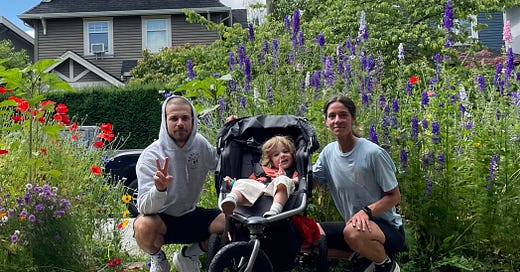




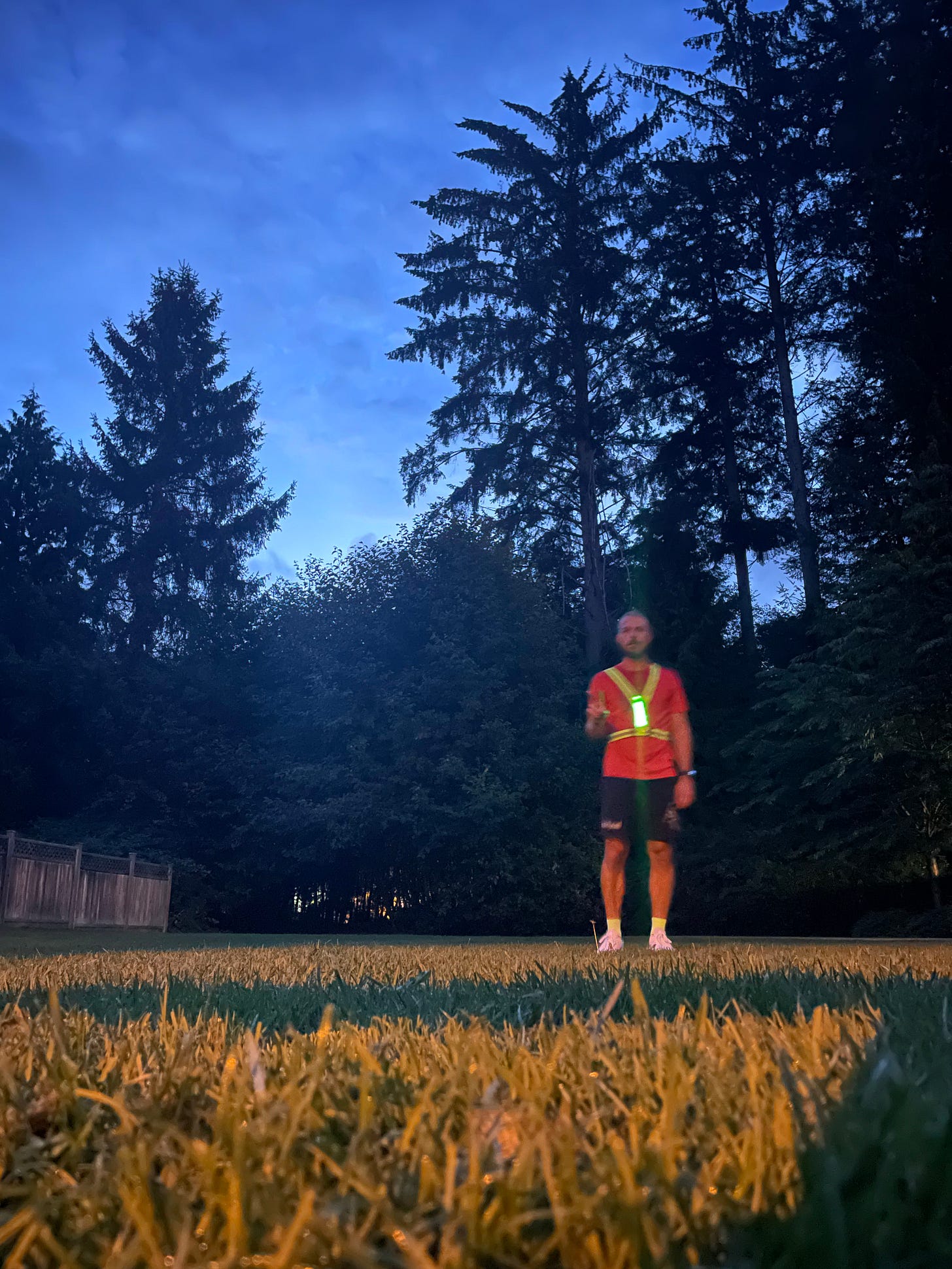
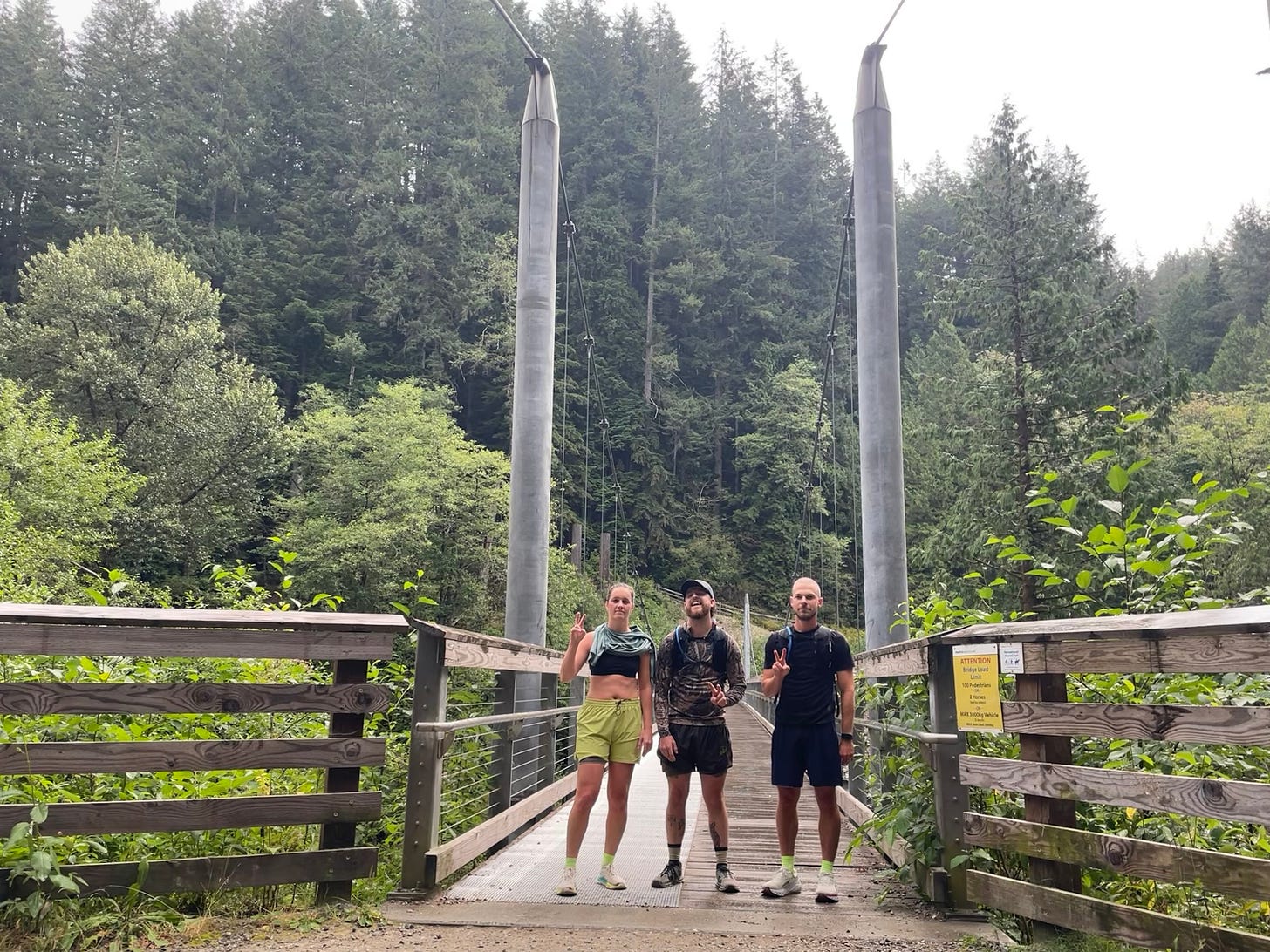
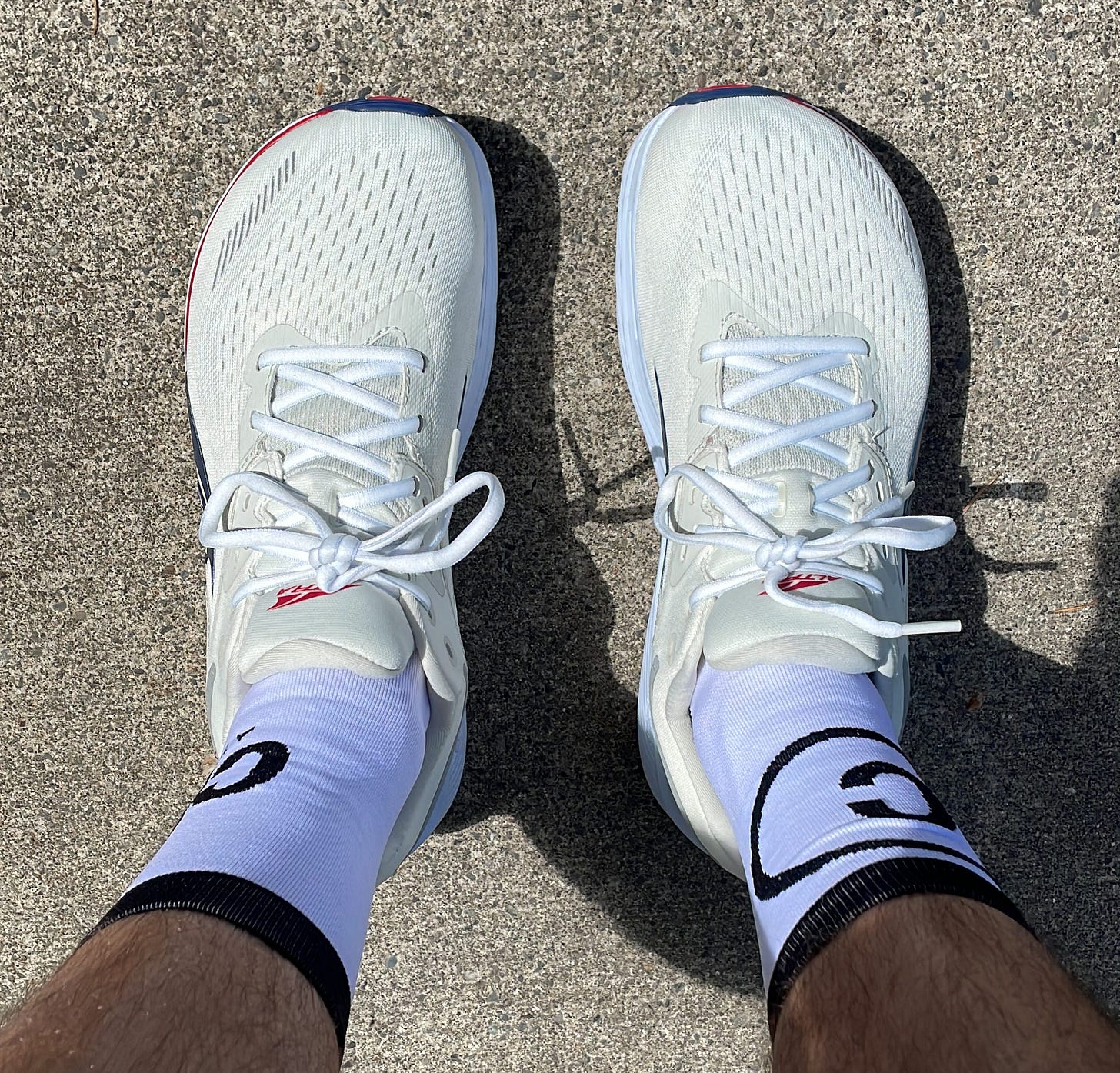
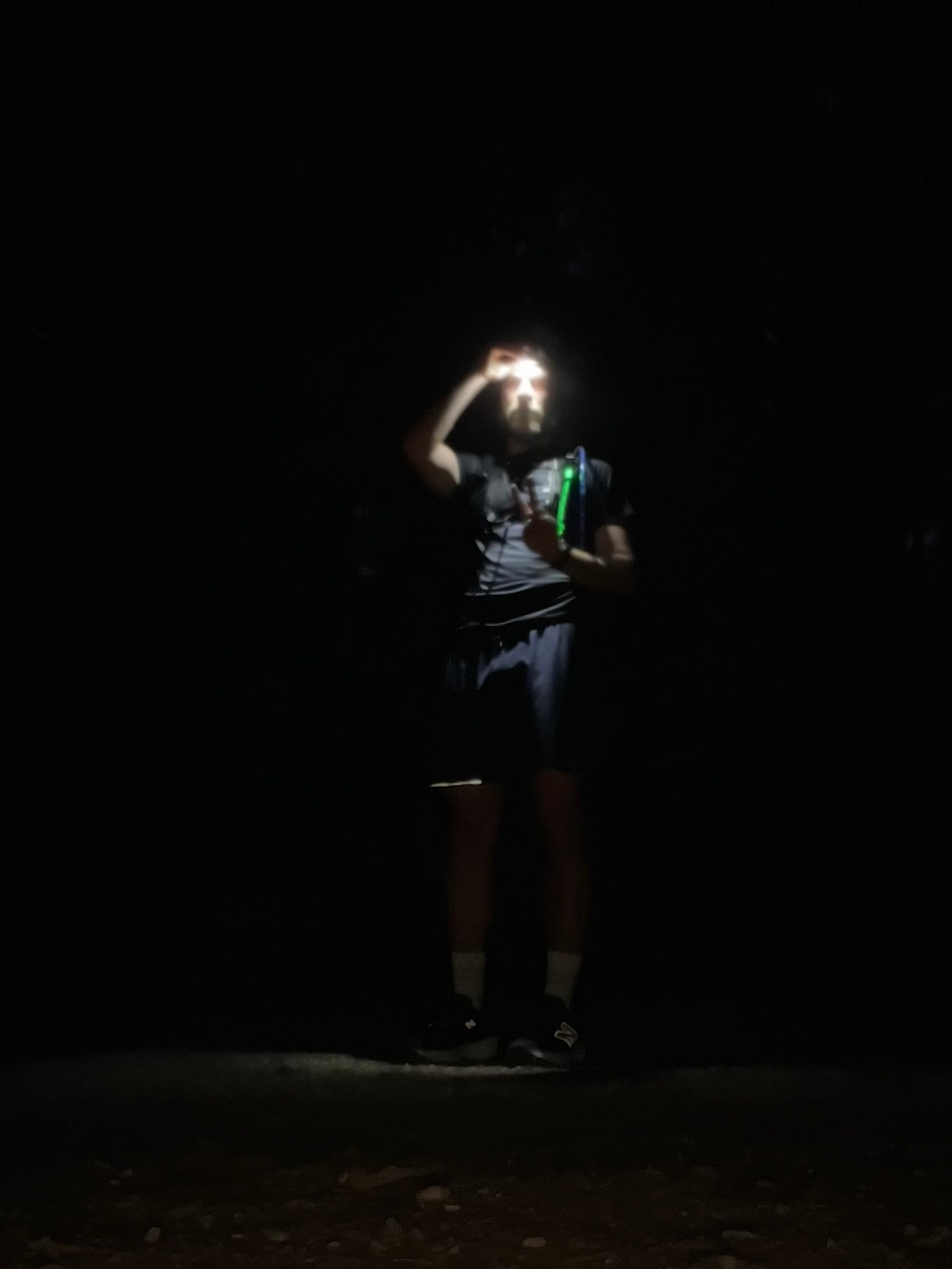
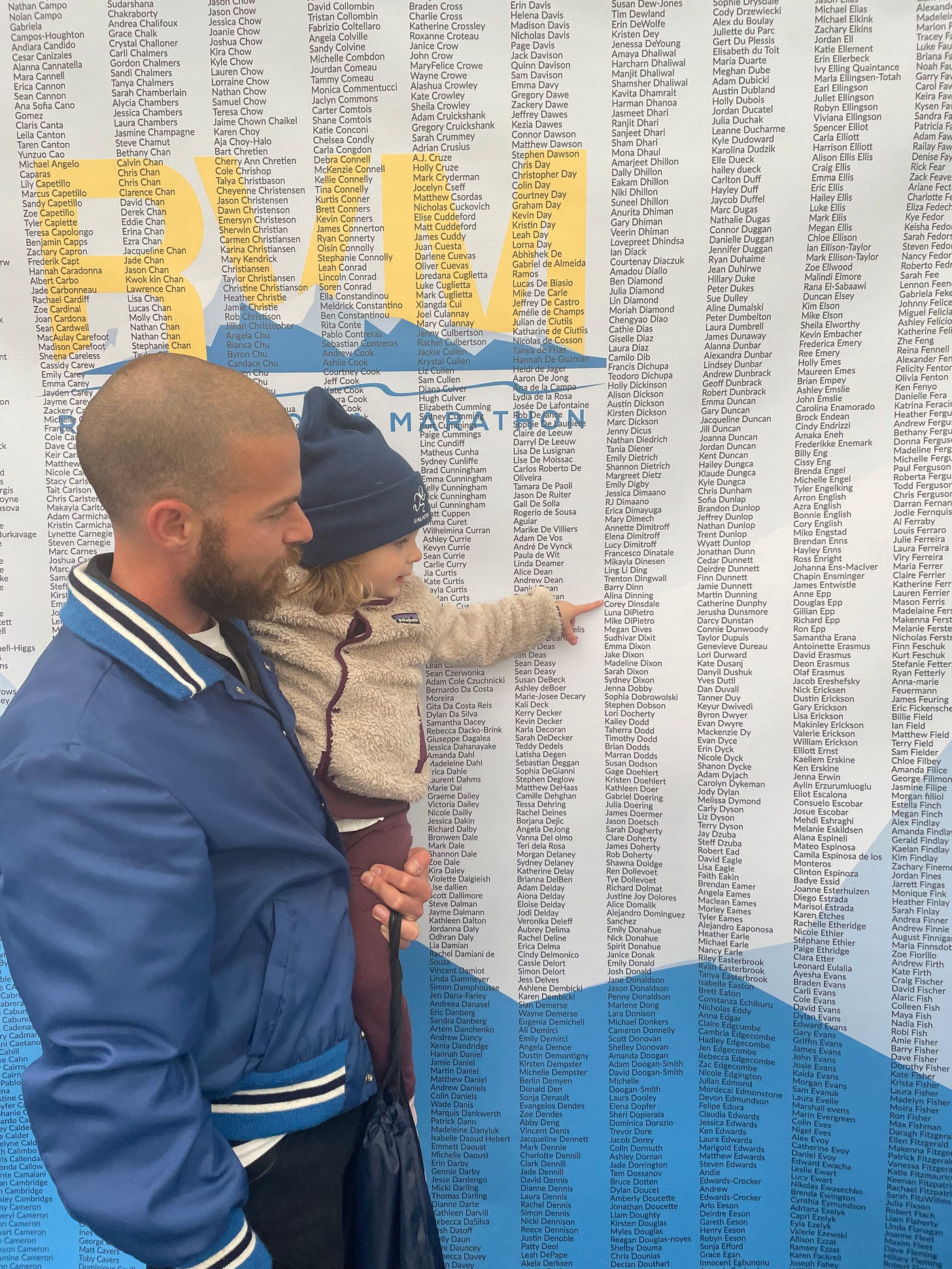
really enjoyed!! has all my favourites mikedi aspects (science, family time, takeaways). very thoughtful long-form with the storyline and visuals :)
would love some more insight on the double protein shakes.
are you continuing them out of convenience? or maybe scaling them back a bit for more natural options. have you felt a noticeable difference in recovery from the protein source?
looking forward to next years post